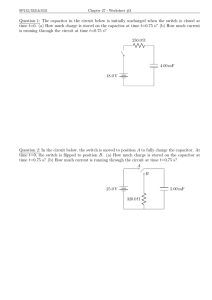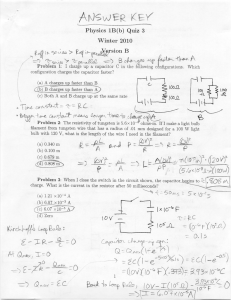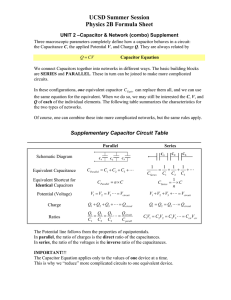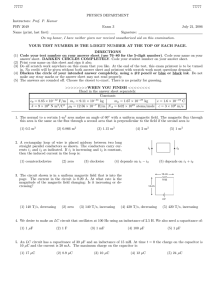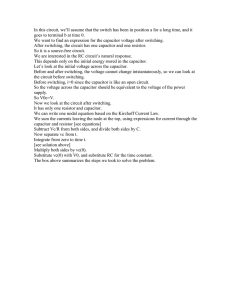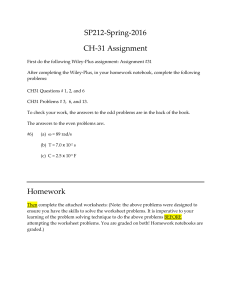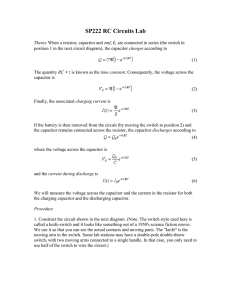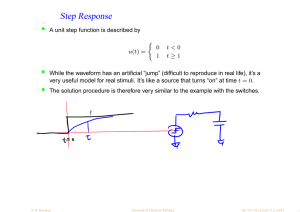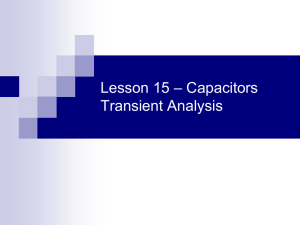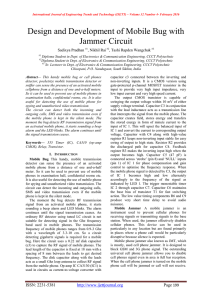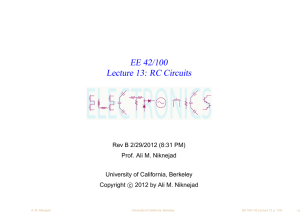Problem Set 5 (rev B) Due Friday (5pm), March 16, 2012
advertisement
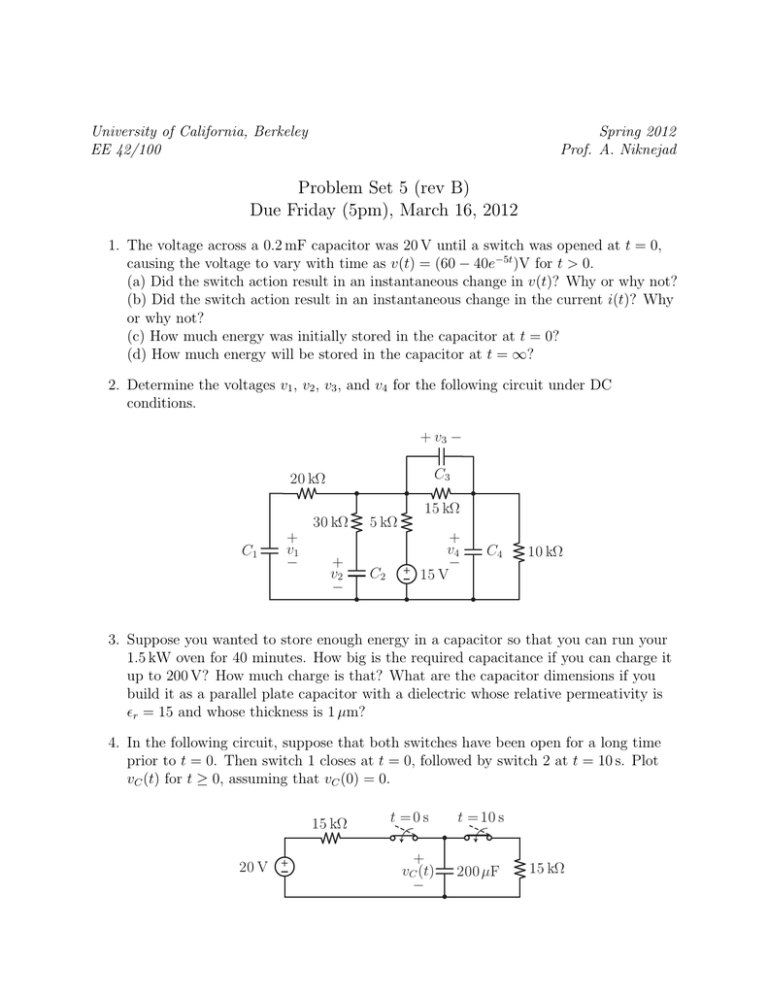
University of California, Berkeley EE 42/100 Spring 2012 Prof. A. Niknejad Problem Set 5 (rev B) Due Friday (5pm), March 16, 2012 1. The voltage across a 0.2 mF capacitor was 20 V until a switch was opened at t = 0, causing the voltage to vary with time as v(t) = (60 − 40e−5t )V for t > 0. (a) Did the switch action result in an instantaneous change in v(t)? Why or why not? (b) Did the switch action result in an instantaneous change in the current i(t)? Why or why not? (c) How much energy was initially stored in the capacitor at t = 0? (d) How much energy will be stored in the capacitor at t = ∞? 2. Determine the voltages v1 , v2 , v3 , and v4 for the following circuit under DC conditions. + v3 − C3 20 kΩ 30 kΩ C1 + v1 − + v2 − 15 kΩ 5 kΩ C2 + 15 V + v4 − C4 10 kΩ 3. Suppose you wanted to store enough energy in a capacitor so that you can run your 1.5 kW oven for 40 minutes. How big is the required capacitance if you can charge it up to 200 V? How much charge is that? What are the capacitor dimensions if you build it as a parallel plate capacitor with a dielectric whose relative permeativity is r = 15 and whose thickness is 1 µm? 4. In the following circuit, suppose that both switches have been open for a long time prior to t = 0. Then switch 1 closes at t = 0, followed by switch 2 at t = 10 s. Plot vC (t) for t ≥ 0, assuming that vC (0) = 0. 15 kΩ 20 V + t = 0s + vC (t) − t = 10 s 200µF 15 kΩ 5. In the following circuit, the switch has been closed for a long time before it opens at t = 0. Determine i(t) for t ≥ 0. t=0 30 kΩ 50 kΩ i(t) 20 V + 12 µF 60 µF 6. Suppose the voltage source in the following circuit is defined by a ramp function, such that v(t) = 0 for t < 0 and v(t) = t for t ≥ 0. If vC (0) = 0, derive an expression for vC (t) for t ≥ 0 and sketch it to scale versus time. Consider trying a particular solution of the form vC (t) = A + Bt. R v(t) + C + vC (t) − 7. In the following circuit, the current source has an exponential characteristic i(t) = 10e−t µA. (a) Write the differential equation for the node v(t). (b) What is the time constant? Write the form of the complementary solution. (c) Usually we would want to try a particular solution of the form vp (t) = Ke−t , since the forcing function is exponential. Why won’t that work here? (d) Using the form vp (t) = Kte−t instead, find the particular solution. Then find the complete solution for v(t) by combining your solution with that from (b). v(t) i(t) t=0 500 kΩ 2 µF 8. Suppose that the sources in the following circuit both undergo step transitions at t = 0. Prior to this, both sources are off, and the capacitor is uncharged. For t ≥ 0, i(t) = 1 mA and v(t) = 1 V. Use superposition to determine vO (t) for all time. 1 kΩ i(t) vO (t) 2 kΩ 0.5 µF 1 kΩ 2 + v(t) 9. Relate vo (t) to vi (t) in the following circuit. Assume that vC = 0 at t = 0. C R2 vi (t) vo(t) R1 10. Relate io (t) to vi (t) in the following circuit. Assume that vC = 0 at t = 0. C vi (t) R 3 i o(t)


![Sample_hold[1]](http://s2.studylib.net/store/data/005360237_1-66a09447be9ffd6ace4f3f67c2fef5c7-300x300.png)
